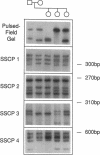Abstract
Apolipoprotein(a) [apo(a)], an apolipoprotein unique to lipoprotein(a) [Lp(a)], is highly polymorphic in size. Previous studies have indicated that the size of the apo(a) gene tends to be inversely correlated with the plasma level of Lp(a). However, several exceptions to this general trend have been identified. Individuals with apo(a) alleles of identical size do not always have similar plasma concentrations of Lp(a). To determine if these differences in plasma Lp(a) concentrations were due to sequence variations in the apo(a) gene, we examined the sequences of apo(a) alleles in 23 individuals homozygous for same-sized apo(a) alleles. We identified four single-strand DNA conformation polymorphisms (SSCPs) in the apo(a) gene. Of the 23 homozygotes, 21 (91%) were heterozygous for at least one of the SSCPs. Analysis of a family in which a parent was homozygous for the same-sized apo(a) allele revealed that each allele, though identical size, segregated with different plasma concentrations of Lp(a). These studies indicate that the apo(a) gene is even more polymorphic in sequence than was previously appreciated, and that sequence variations at the apo(a) locus, other than the number of kringle 4 repeats, contribute to the plasma concentration of Lp(a).
Full text
PDF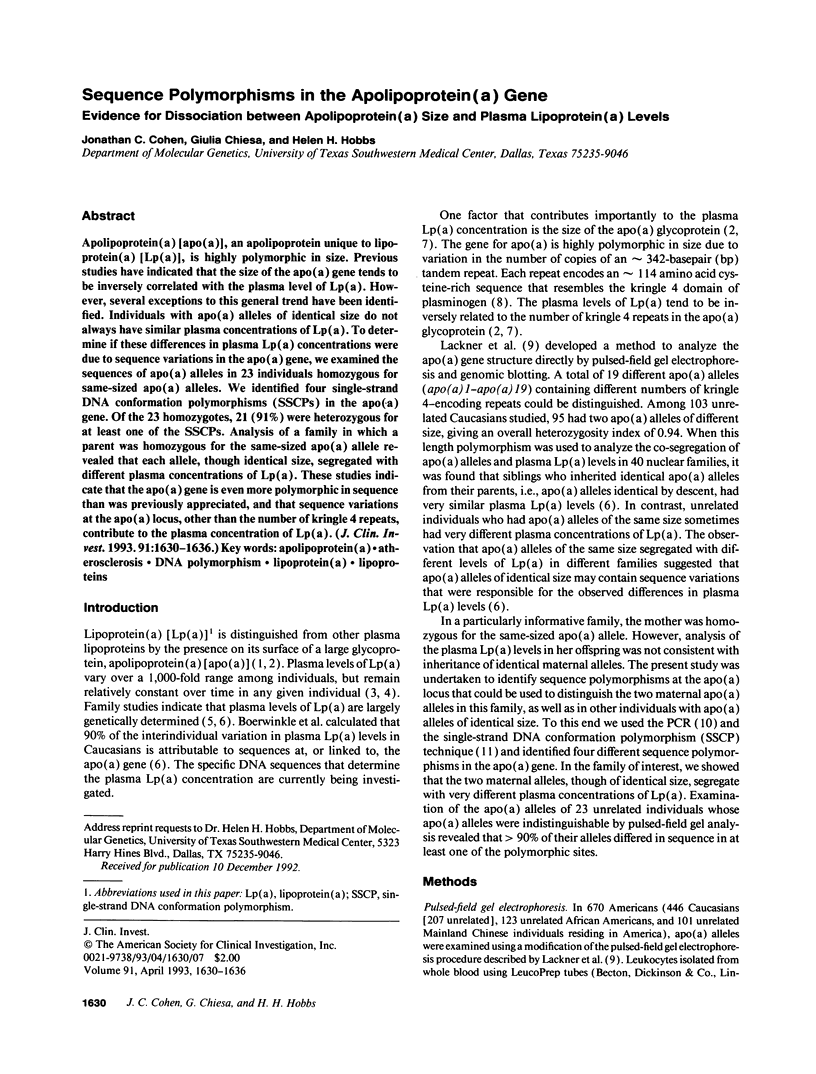
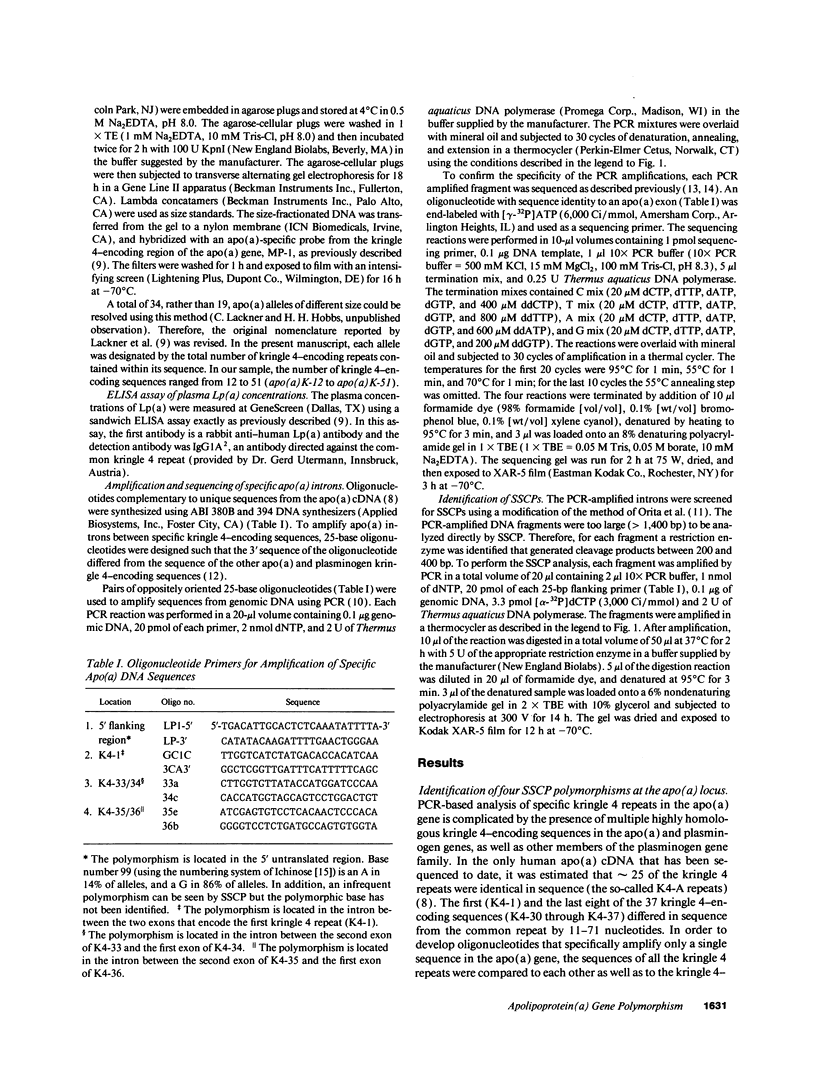
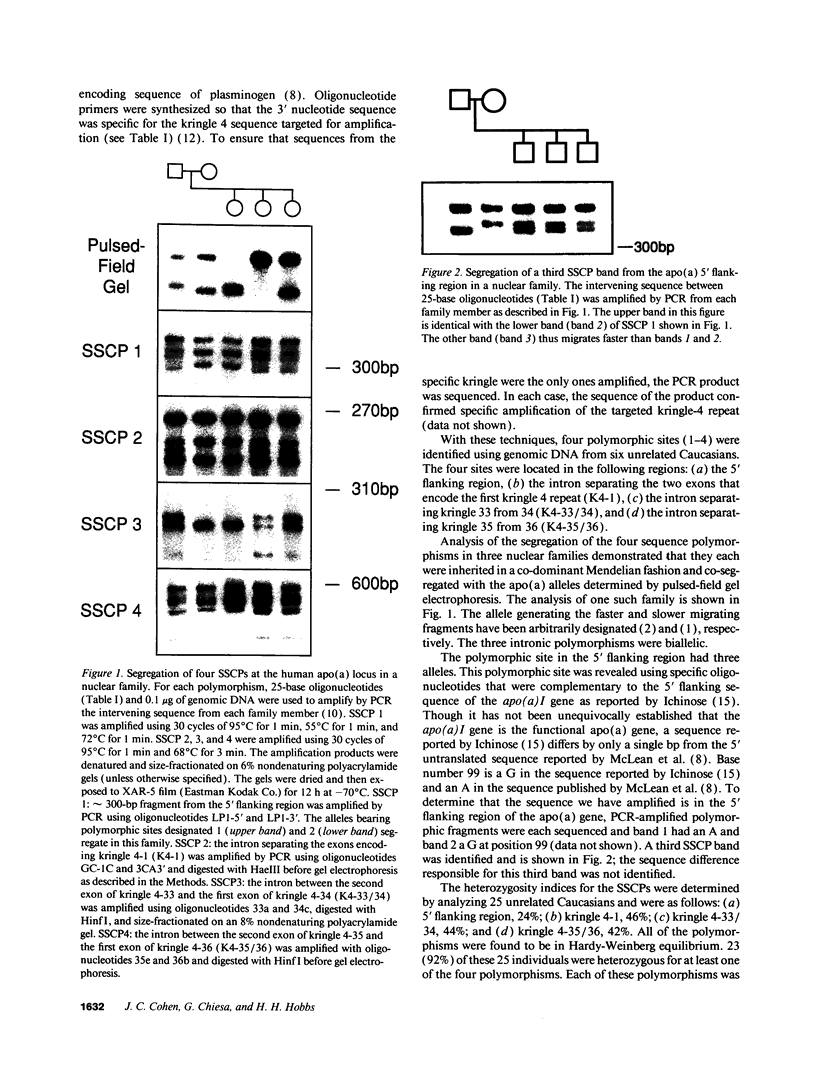
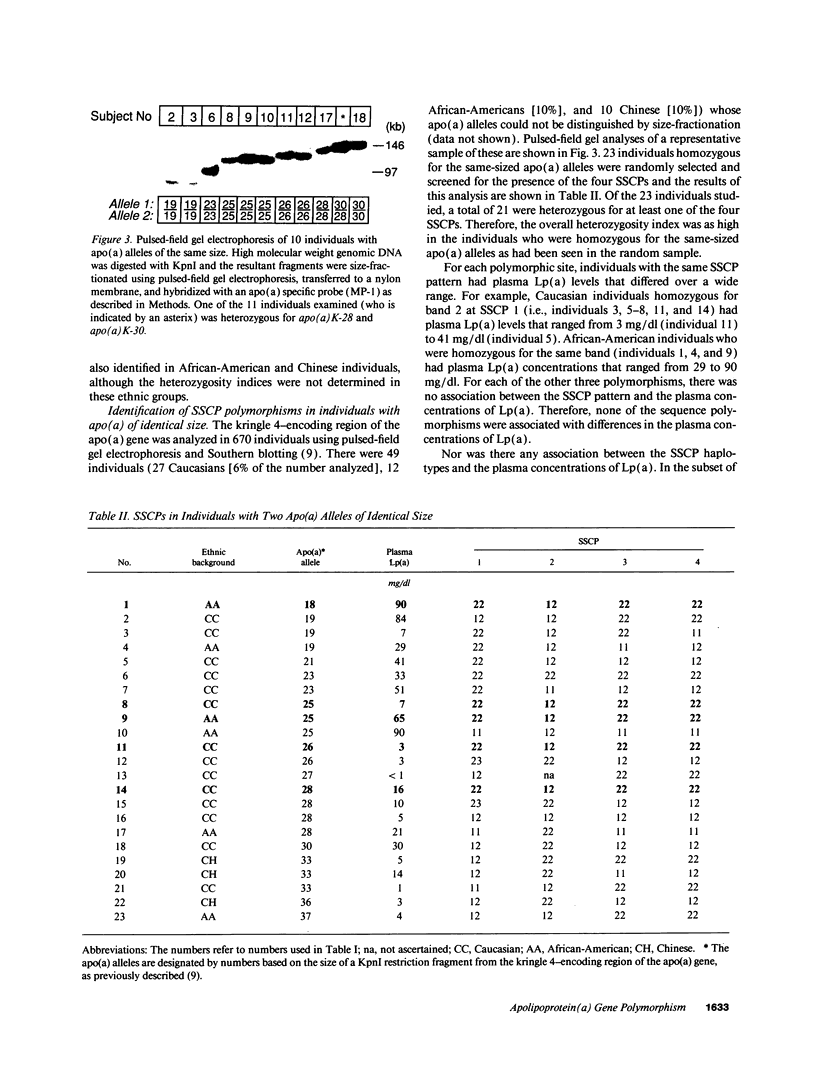
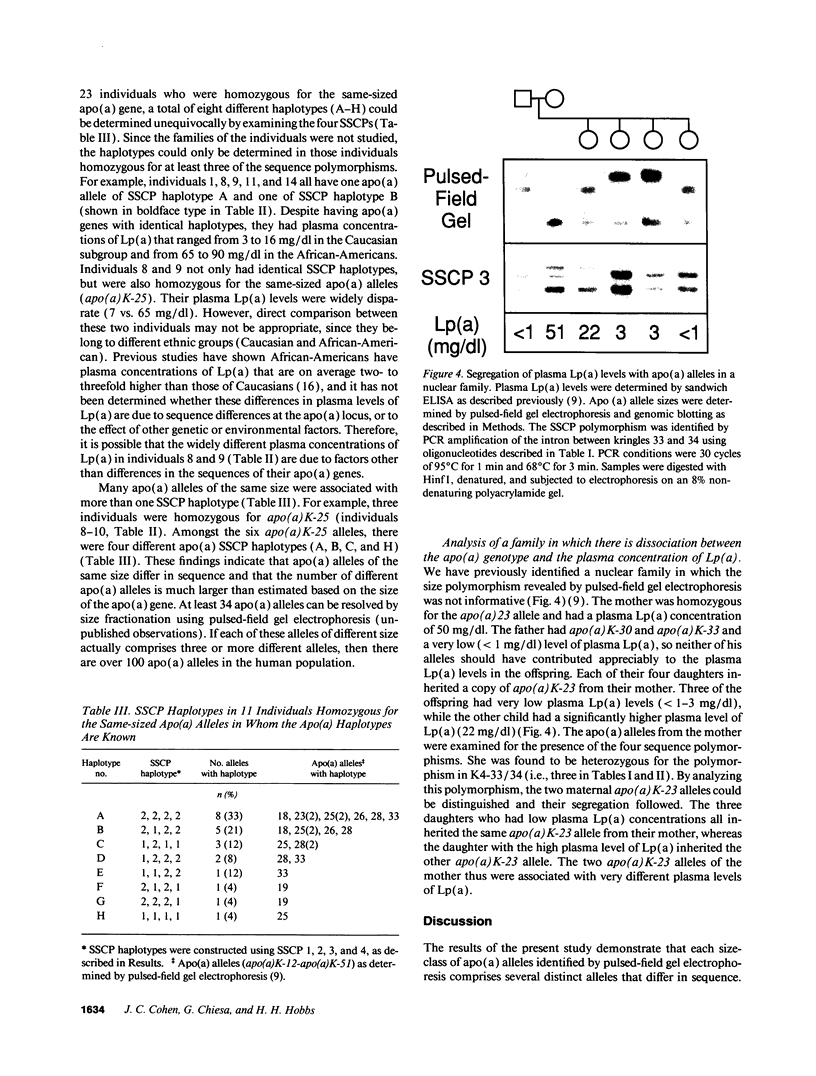
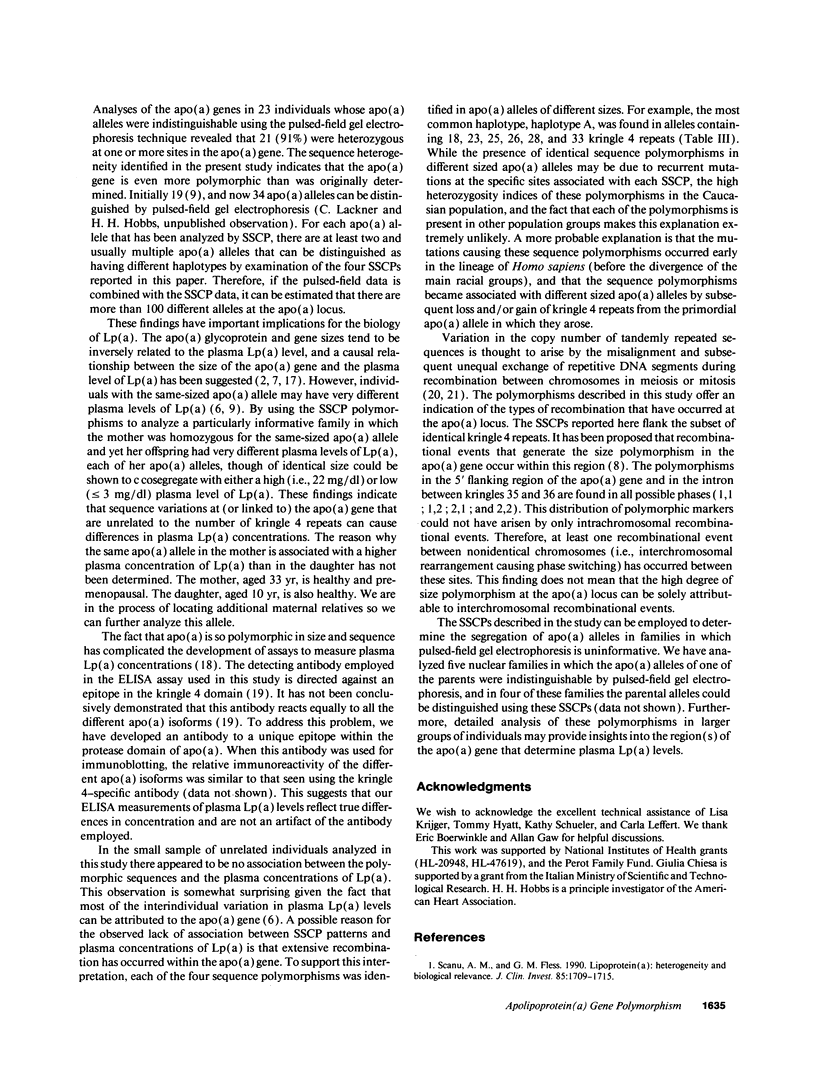
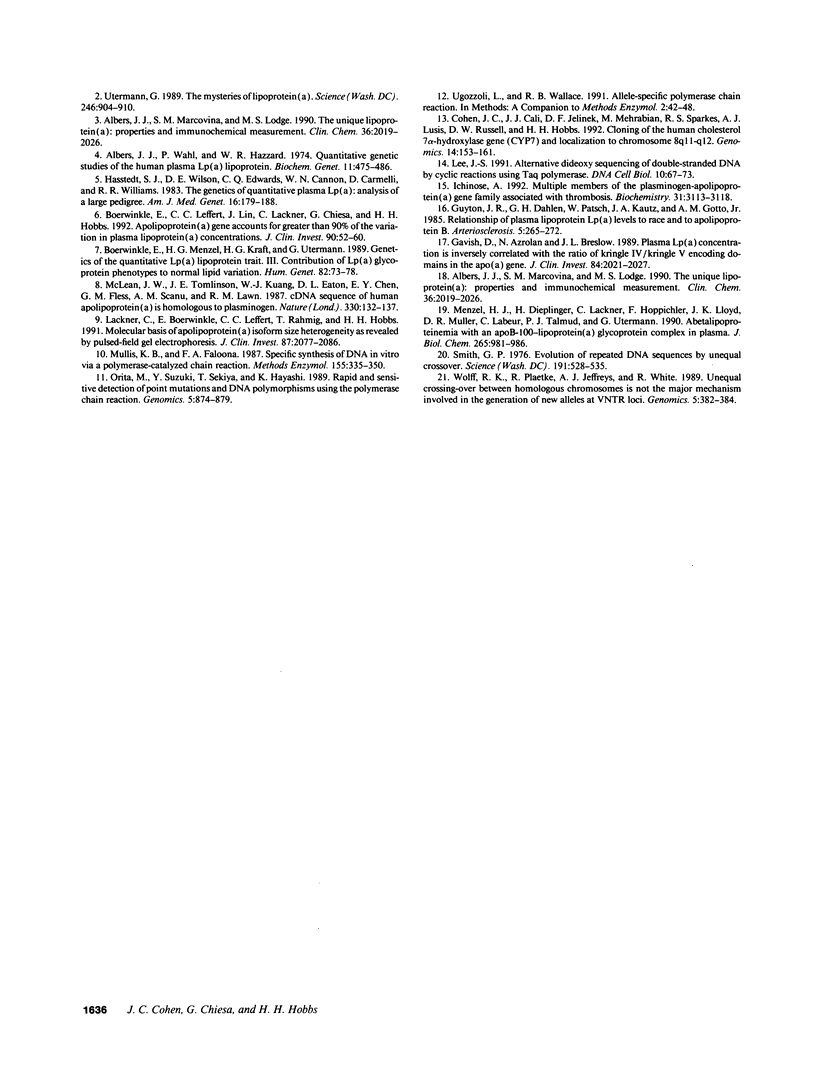
Images in this article
Selected References
These references are in PubMed. This may not be the complete list of references from this article.
- Albers J. J., Marcovina S. M., Lodge M. S. The unique lipoprotein(a): properties and immunochemical measurement. Clin Chem. 1990 Dec;36(12):2019–2026. [PubMed] [Google Scholar]
- Albers J. J., Marcovina S. M., Lodge M. S. The unique lipoprotein(a): properties and immunochemical measurement. Clin Chem. 1990 Dec;36(12):2019–2026. [PubMed] [Google Scholar]
- Albers J. J., Wahl P., Hazzard W. R. Quantitative genetic studies of the human plasma Lp(a) lipoprotein. Biochem Genet. 1974 Jun;11(6):475–486. doi: 10.1007/BF00486079. [DOI] [PubMed] [Google Scholar]
- Boerwinkle E., Leffert C. C., Lin J., Lackner C., Chiesa G., Hobbs H. H. Apolipoprotein(a) gene accounts for greater than 90% of the variation in plasma lipoprotein(a) concentrations. J Clin Invest. 1992 Jul;90(1):52–60. doi: 10.1172/JCI115855. [DOI] [PMC free article] [PubMed] [Google Scholar]
- Boerwinkle E., Menzel H. J., Kraft H. G., Utermann G. Genetics of the quantitative Lp(a) lipoprotein trait. III. Contribution of Lp(a) glycoprotein phenotypes to normal lipid variation. Hum Genet. 1989 Apr;82(1):73–78. doi: 10.1007/BF00288277. [DOI] [PubMed] [Google Scholar]
- Cohen J. C., Cali J. J., Jelinek D. F., Mehrabian M., Sparkes R. S., Lusis A. J., Russell D. W., Hobbs H. H. Cloning of the human cholesterol 7 alpha-hydroxylase gene (CYP7) and localization to chromosome 8q11-q12. Genomics. 1992 Sep;14(1):153–161. doi: 10.1016/s0888-7543(05)80298-8. [DOI] [PubMed] [Google Scholar]
- Gavish D., Azrolan N., Breslow J. L. Plasma Ip(a) concentration is inversely correlated with the ratio of Kringle IV/Kringle V encoding domains in the apo(a) gene. J Clin Invest. 1989 Dec;84(6):2021–2027. doi: 10.1172/JCI114395. [DOI] [PMC free article] [PubMed] [Google Scholar]
- Guyton J. R., Dahlen G. H., Patsch W., Kautz J. A., Gotto A. M., Jr Relationship of plasma lipoprotein Lp(a) levels to race and to apolipoprotein B. Arteriosclerosis. 1985 May-Jun;5(3):265–272. doi: 10.1161/01.atv.5.3.265. [DOI] [PubMed] [Google Scholar]
- Hasstedt S. J., Wilson D. E., Edwards C. Q., Cannon W. N., Carmelli D., Williams R. R. The genetics of quantitative plasma Lp(a): analysis of a large pedigree. Am J Med Genet. 1983 Oct;16(2):179–188. doi: 10.1002/ajmg.1320160208. [DOI] [PubMed] [Google Scholar]
- Ichinose A. Multiple members of the plasminogen-apolipoprotein(a) gene family associated with thrombosis. Biochemistry. 1992 Mar 31;31(12):3113–3118. doi: 10.1021/bi00127a011. [DOI] [PubMed] [Google Scholar]
- Lee J. S. Alternative dideoxy sequencing of double-stranded DNA by cyclic reactions using Taq polymerase. DNA Cell Biol. 1991 Jan-Feb;10(1):67–73. doi: 10.1089/dna.1991.10.67. [DOI] [PubMed] [Google Scholar]
- McLean J. W., Tomlinson J. E., Kuang W. J., Eaton D. L., Chen E. Y., Fless G. M., Scanu A. M., Lawn R. M. cDNA sequence of human apolipoprotein(a) is homologous to plasminogen. Nature. 1987 Nov 12;330(6144):132–137. doi: 10.1038/330132a0. [DOI] [PubMed] [Google Scholar]
- Menzel H. J., Dieplinger H., Lackner C., Hoppichler F., Lloyd J. K., Muller D. R., Labeur C., Talmud P. J., Utermann G. Abetalipoproteinemia with an ApoB-100-lipoprotein(a) glycoprotein complex in plasma. Indication for an assembly defect. J Biol Chem. 1990 Jan 15;265(2):981–986. [PubMed] [Google Scholar]
- Mullis K. B., Faloona F. A. Specific synthesis of DNA in vitro via a polymerase-catalyzed chain reaction. Methods Enzymol. 1987;155:335–350. doi: 10.1016/0076-6879(87)55023-6. [DOI] [PubMed] [Google Scholar]
- Orita M., Suzuki Y., Sekiya T., Hayashi K. Rapid and sensitive detection of point mutations and DNA polymorphisms using the polymerase chain reaction. Genomics. 1989 Nov;5(4):874–879. doi: 10.1016/0888-7543(89)90129-8. [DOI] [PubMed] [Google Scholar]
- Scanu A. M., Fless G. M. Lipoprotein (a). Heterogeneity and biological relevance. J Clin Invest. 1990 Jun;85(6):1709–1715. doi: 10.1172/JCI114625. [DOI] [PMC free article] [PubMed] [Google Scholar]
- Utermann G. The mysteries of lipoprotein(a). Science. 1989 Nov 17;246(4932):904–910. doi: 10.1126/science.2530631. [DOI] [PubMed] [Google Scholar]
- Wolff R. K., Plaetke R., Jeffreys A. J., White R. Unequal crossingover between homologous chromosomes is not the major mechanism involved in the generation of new alleles at VNTR loci. Genomics. 1989 Aug;5(2):382–384. doi: 10.1016/0888-7543(89)90076-1. [DOI] [PubMed] [Google Scholar]



